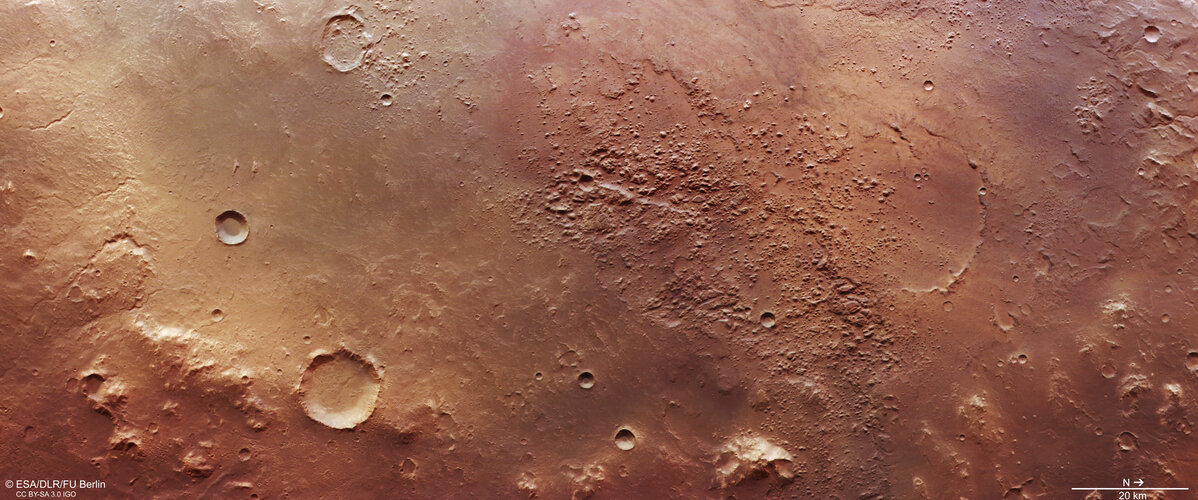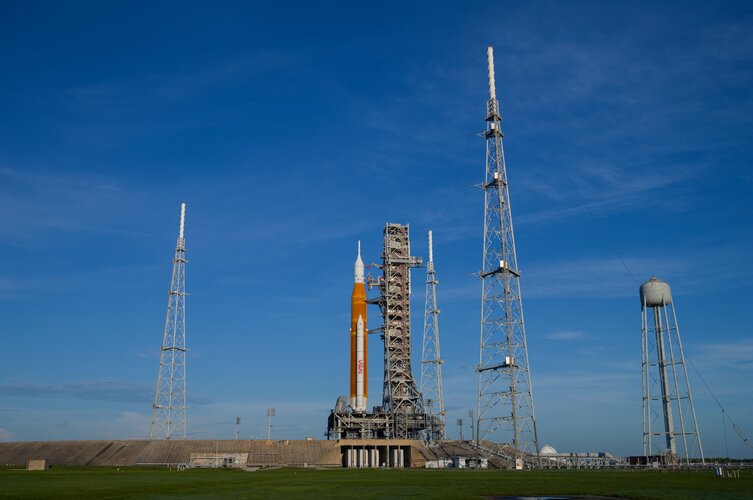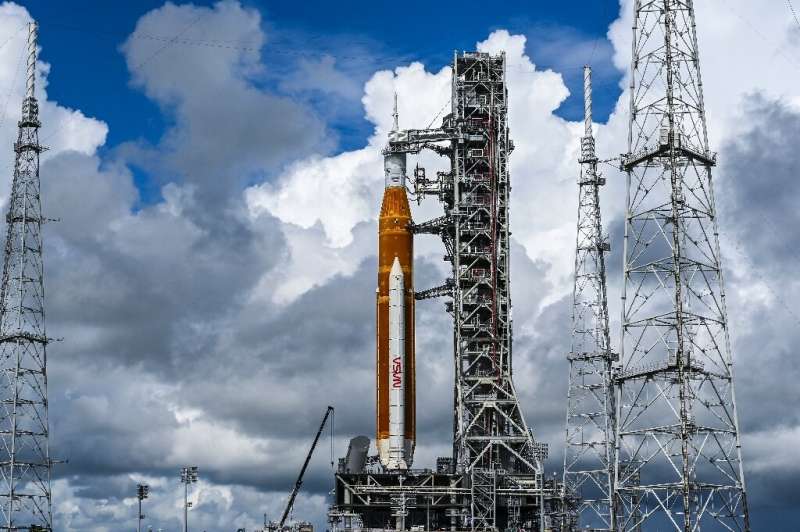
Copernical Team
AFRL partners with NASA, academia, industry on spacecraft flight experiment
 The Air Force Research Laboratory Space Vehicles Directorate in collaboration with the Georgia Tech Research Institute, or GTRI, NASA and DuPont de Nemours, Inc., has a brand-new spacecraft materials experiment flying on the International Space Station.
A SpaceX cargo Dragon spacecraft delivered the experiment named 16 Materials International Space Station Experiment, or MISSE-16, to the I
The Air Force Research Laboratory Space Vehicles Directorate in collaboration with the Georgia Tech Research Institute, or GTRI, NASA and DuPont de Nemours, Inc., has a brand-new spacecraft materials experiment flying on the International Space Station.
A SpaceX cargo Dragon spacecraft delivered the experiment named 16 Materials International Space Station Experiment, or MISSE-16, to the I Scientists evaluate Earth-cooling strategies with geoengineering simulations
 A group of international scientists led by Cornell is - more rigorously and systematically than ever before - evaluating if and how the stratosphere could be made just a little bit "brighter," reflecting more incoming sunlight so that an ever-warming Earth maintains its cool.
Their work was published Aug. 12 in the Proceedings of the National Academy of Sciences.
Solar radiation modi
A group of international scientists led by Cornell is - more rigorously and systematically than ever before - evaluating if and how the stratosphere could be made just a little bit "brighter," reflecting more incoming sunlight so that an ever-warming Earth maintains its cool.
Their work was published Aug. 12 in the Proceedings of the National Academy of Sciences.
Solar radiation modi BlackSky awarded NASA contract to advance Earth Science research
 BlackSky Technology Inc. (NYSE: BKSY) received its first call order, worth $1.7 million, from NASA to evaluate accessibility, accuracy, quality and utility of the Company's imaging data services for the Commercial Smallsat Data Acquisition (CSDA) Program.
"New discoveries in Earth science can be accelerated with innovative research methods and real-time dynamic data sets that keep up with
BlackSky Technology Inc. (NYSE: BKSY) received its first call order, worth $1.7 million, from NASA to evaluate accessibility, accuracy, quality and utility of the Company's imaging data services for the Commercial Smallsat Data Acquisition (CSDA) Program.
"New discoveries in Earth science can be accelerated with innovative research methods and real-time dynamic data sets that keep up with Comet impacts formed continents when Solar System entered galactic arms
 New Curtin research has found evidence that Earth's early continents resulted from being hit by comets as our Solar System passed into and out of the spiral arms of the Milky Way Galaxy, turning traditional thinking about our planet's formation on its head.
The new research, published in Geology, challenges the existing theory that Earth's crust was solely formed by processes inside our pl
New Curtin research has found evidence that Earth's early continents resulted from being hit by comets as our Solar System passed into and out of the spiral arms of the Milky Way Galaxy, turning traditional thinking about our planet's formation on its head.
The new research, published in Geology, challenges the existing theory that Earth's crust was solely formed by processes inside our pl Chaotic crust contains clues to Mars’ watery past

Mars Express takes us over the Holden Basin – part of a region that is a high-ranking target in the search for signs of past life on the Red Planet. This image was taken on 24 April 2022 by the spacecraft’s High Resolution Stereo Camera.
Second try for the Artemis I Moon flight

Teams are moving forward to the Moon with a second launch attempt of the Artemis I mission on Saturday, 3 September. The two-hour launch window starts at 20:17 CEST (19:17 BST).
New launch attempt Saturday for NASA's Moon rocket

NASA will make a second attempt to launch its powerful new Moon rocket on Saturday, after scrubbing a test flight earlier in the week, an official said Tuesday.
The highly anticipated uncrewed mission—dubbed Artemis 1—will bring the United States a step closer to returning astronauts to the Moon five decades after humans last walked on the lunar surface.
Mission manager Mike Sarafin, said the NASA team "agreed to move our launch date to Saturday, September the third."
Blastoff had been planned for Monday morning but was canceled because a test to get one of the rocket's four RS-25 engines to the proper temperature range for launch was not successful.
New launch attempt Saturday for NASA's Moon rocket: official
 NASA will make a second attempt to launch its powerful new Moon rocket on Saturday, after scrubbing a test flight earlier in the week, an official said.
Blastoff had been planned for Monday morning but was canceled because a test to get one of the rocket's four RS-25 engines to the proper temperature range for launch was not successful.
Mike Sarafin, mission manager of Artemis 1 at NASA,
NASA will make a second attempt to launch its powerful new Moon rocket on Saturday, after scrubbing a test flight earlier in the week, an official said.
Blastoff had been planned for Monday morning but was canceled because a test to get one of the rocket's four RS-25 engines to the proper temperature range for launch was not successful.
Mike Sarafin, mission manager of Artemis 1 at NASA, NASA repairs issue with Voyager 1 space probe
 Engineers with NASA have repaired an issue with the space agency's Voyager 1 spacecraft, but have yet to identify the cause of the problem, officials confirmed on Tuesday.
The probe had been sending garbled data about its status, including information about its health and activities to mission controllers, despite otherwise operating normally.
NASA also said the rest of the probe
Engineers with NASA have repaired an issue with the space agency's Voyager 1 spacecraft, but have yet to identify the cause of the problem, officials confirmed on Tuesday.
The probe had been sending garbled data about its status, including information about its health and activities to mission controllers, despite otherwise operating normally.
NASA also said the rest of the probe Space station experiment to probe origins of elements

Astronomer Carl Sagan put it best: "We're made of star stuff." The atoms that make up the chemicals of our bodies didn't originate on Earth; they came from deep space. The big bang created hydrogen, helium, and a little bit of lithium, but heavier atoms—the ones essential for life—came from processes related to stars.
Scientists can now probe deeper. Which kinds of stellar processes produce which elements? And which kinds of stars are involved?
A new experiment called TIGERISS, envisioned for the International Space Station, aims to find out. TIGERISS has been chosen as the latest NASA Astrophysics Pioneers mission.
Pioneers are small-scale astrophysics missions that enable innovative investigations into cosmic phenomena. They may include experiments designed to fly on small satellites, scientific balloons, the space station, and payloads that could orbit or land on the Moon.
Earlier this year, the four previous Pioneers mission concepts, chosen in January 2021, were given the green light to move forward with construction and have been approved to fly later this decade.
"The Pioneer missions are an invaluable opportunity for early to mid-career scientists to conduct compelling astrophysics investigations, while gaining real experience in building space-based instrumentation," said Mark Clampin, director of the astrophysics division at NASA Headquarters in Washington.

